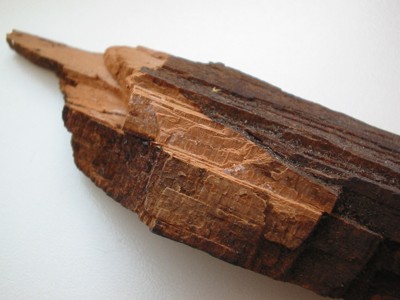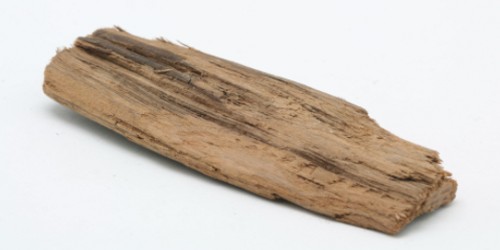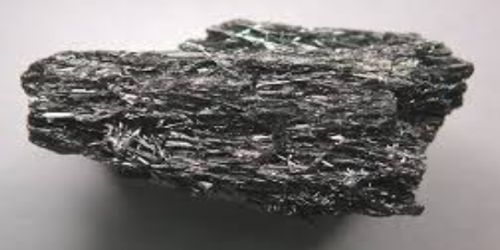Fichtelite is a rare white mineral found in fossilized wood from Bavaria. It is a rare white monoclinic mineral found in fossilized wood from Bavaria. It crystallizes in the monoclinic crystal system. It is a cyclic hydrocarbon: dimethyl-isopropyl-perhydrophenanthrene, C19H34.
It was first described in 1841 and named for the location, Fichtelgebirge, Bavaria, Germany. It has been reported from fossilized pine wood from a peat bog and in organic-rich modern marine sediments.
General Information
- Category: Organic mineral
- Formula: C19H34
- Crystal system: Monoclinic
- Crystal class: Sphenoidal (2) (same H-M symbol)

Fig: Fichtelite
Properties
It is very soft with a Mohs hardness of 1, the same as talc. Its specific gravity is very low at 1.032, just slightly denser than water.
- Color: Colorless, white, pale yellow
- Crystal habit: Elongated tabular crystals
- Cleavage: Good on {001} and {100}
- Mohs scale hardness: 1
- Luster: Greasy
- Streak: White
- Diaphaneity: Transparent
- Specific gravity: 0.631 and calculated 1.032
- Optical properties: Biaxial
Occurrence: In fossilized pine wood from a peat bog; in organic-rich modern marine sediment. It is a mineral resin occurring in white shining crystals or crystalline scales, embedded in the wood of a kind of pine found in peat-beds in the Fichtelgebirge, Bavaria.
Distribution: In Germany, from Gampen, seven km north of Marktredwitz, and at Zeitelmoos, northwest of Wunsiedel, Fichtelgebirge. At Sobeslav, Czech Republic. Additional older localities require confirmation by modern methods.
Information Source:
















